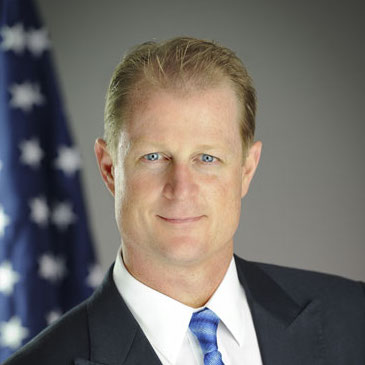
Independent agencies should adopt four key analytical standards.
When conducting the analysis needed to inform sound regulatory decision-making, independent agencies could benefit from following key analytical standards that over the years have been imposed on executive branch agencies by executive orders. As a Commissioner of the U.S. Consumer Product Safety Commission (CPSC), too often I have seen my Agency depart from these analytical best practices, which then can lead to misinformed and even unnecessary regulations. Regulatory decision-making at independent agencies like CPSC would benefit from adherence to four main analytic requirements contained in executive orders.
First, independent agencies should be required to identify a market failure before promulgating a new regulation. Currently, Executive Order 12,866, which applies to executive but not independent agencies, provides that regulation can be justified on the basis of “material failures of private markets to protect or improve the health and safety of the public.” CPSC’s authorizing legislation does state that the Agency can only issue mandatory product safety standards if either no voluntary standard addresses a detected risk or if industry fails to comply with an existing standard. However, this legislation does not expressly limit the Agency to stepping in only where private markets have failed.
Too often, CPSC focuses on regulation in the absence of a demonstrated market failure. For example, many have called on CPSC to address the significant number of hand and finger injuries among users of table saws. Those advocates want us to mandate the use of Active Injury Mitigation (AIM) technology to prevent many of these serious injuries. This technology, they argue, is already on the market, with versions from two different manufacturers, so compliance with a future mandate would be feasible.
However, the fact that two companies already make AIM-equipped saws actually suggests that we do not need a rule: The market has not failed. Consumers are well aware of the risk that a spinning blade poses, and they can already choose an AIM-equipped saw to mitigate that risk. If they do not choose such a saw—whether because they do not like the technology or because they do not believe that the benefits justify the added cost—their informed choice is part of a functioning market, not a failed one.
If CPSC were to require AIM technology on all saws, we would not be repairing the market but rather impairing it. We would be favoring two firms over their competitors, imposing a cost that informed consumers can presently choose to avoid. If the “market failure” language of Executive Order 12,866 applied to CPSC by statute, we would have to demonstrate that the consumers were being harmed because they lacked the information to make a choice, not just that consumers are making choices we do not like.
Second, the kind of cost-benefit analysis required of executive branch agencies would lead to better rules at CPSC and other independent agencies. For example, starting in 1981, Executive Order 12,291 called for executive agencies “to maximize the net benefits to society.” Although this order was subsequently replaced by Executive Order 12,866, which was later supplemented with Executive Order 13,563, these more current orders also state that agencies should choose regulations that “maximize net benefits.” A similar concept is Executive Order 12866’s principle that “each agency . . . tailor its regulations to impose the least burden on society,” a principle that Executive Order 13,563 retains.
When developing product-specific safety standards, CPSC already operates under even clearer mandates than these executive orders provide. Under Section 9 of the Consumer Product Safety Act (CPSA), in order to mandate a safety standard for a particular product or product category, CPSC must analyze the costs and benefits of the proposed standard, must explore any alternatives, must ensure the costs bear a reasonable relationship to the benefits, and must select the least burdensome option.
The value of Section 9 is not just that it provides an analytical framework, but also that it allows for judicial review, as we saw recently in the 10th Circuit’s decision to strike our magnet rule because of uncertainty in our cost-benefit analysis. Although having a rule thrown out is not pleasant for the agency, if we take to heart this reminder of the importance of the Section 9 analysis, our future rules will be better and sounder for the effort.
For any of our rules that are not product safety standards, however, no similar requirement for cost-benefit analysis applies.
As a result, CPSC fell short of standard cost-benefit principles in developing its rule detailing the testing that children’s product manufacturers must undertake to certify that their products comply with applicable safety standards. The Consumer Product Safety Improvement Act (CPSIA) required such testing and certification, and it required the Agency to issue a rule setting forth the “protocols and standards” for the testing. The Agency dutifully issued a testing rule, but it pointedly did not undertake a full cost-benefit analysis. Indeed, in response to comments suggesting cost-benefit analysis, the Agency flatly refused, noting that because the rule was not a safety standard under Section 9 of the CPSA the Agency was not required to complete a cost-benefit analysis.
Even if a law does not require cost-benefit analysis, it is still prudent for an agency to undertake one. CPSC’s testing rule would have been better informed by analyzing manufacturers’ compliance costs and the benefits consumers would get in exchange. We owe it to consumers to ensure that regulations will maximize their best interests. Even if a full cost-benefit analysis would have only supported the Agency’s testing rule, we would still have had the benefit of added confidence in our decision.
Third, agencies—whether executive or independent—should be expected to assemble the best available scientific evidence to inform their regulatory decisions. Executive Orders 13563 and 12866 recognize this principle, observing that “our regulatory system . . . must be based on the best available science.” Executive Order 12866 calls upon agencies to ground their decisions on the “best reasonably obtainable scientific, technical, economic, and other information.” During his first term, President Barack Obama also issued a memorandum requiring that executive agencies put in place rules and procedures that ensure the use of the highest quality science in regulatory development.
At CPSC, the Chronic Hazard Advisory Panel (CHAP) report on phthalate exposure is an example of the desire for new regulations that do not reflect current science. Despite the availability of data on the current state of phthalate usage by manufacturers, the CHAP chose to use data that were nearly a decade old. An outside review found that “the CHAP report is not a systematic review of the available scientific evidence and, as such, is of questionable reliability and validity, lacking in the objectivity and transparency generally recognized as critical by the scientific community.”
CPSC staff, at the Chairman’s direction, have accepted this criticism and undertaken an internal review using more recent data; however, other problems remain. The final rule may go beyond our statutory mandate by using a novel, unproven cumulative risk assessment as a way to justify banning certain phthalates. Mere novelty is, of course, not a reason to disregard an analytical method or its conclusions. However, when novel concepts form the core of a regulatory effort, agencies should take extra care to ensure those methods bear the hallmarks of scientific validity.
Unfortunately, the sound science requirements contained in the Information Quality Act do not “explicitly provide for judicial review.” Codifying the best sound science practices found in executive orders and in President Obama’s memorandum on scientific integrity, along with providing for more robust judicial review of agencies’ scientific analysis, would help ensure independent agencies like CPSC use the best available data and methods when crafting new rules.
Finally, President Obama’s Executive Order 13,610 calls for executive agencies to engage in retrospective review of existing regulations and report on their progress to the White House Office of Information and Regulatory Affairs. No matter how thoughtful an agency’s promulgation of a rule may be, there will always be potential for improvements. Agencies’ vision can be obscured by market complexities, unquantifiable forces, or emerging trends. Although human beings may be naturally inclined both to resist change and to prefer the allure of solving a new problem instead of revisiting their solution to an old problem, agencies need to set those inclinations aside if they wish to ensure their regulations function properly as a whole.
CPSC has had a mixed history with retrospective review. Even prior to the issuance of President Barack Obama’s call for retrospective review, CPSC had conducted its own retrospective examinations. However, the resource demands of the myriad rules required under the CPSIA diverted the Agency’s focus, and its retrospective review program was dormant for several years. Spurred by the Obama Administration’s emphasis on retrospective review, the Agency sought to revive its retrospective review efforts, but the Commissioners were initially unable to reach consensus on how to proceed. Recently, CPSC unanimously adopted an important plan that does comply with the spirit of Executive Order 13,610. That plan includes additional elements of an institutional culture of review, such as calling for the Agency to incorporate “retrospective review provisions in new rulemakings.” I hope CPSC can become a leader in this regard as it puts its retrospective review plan into action.
Overall, independent agencies would do well to adopt all four requirements currently applicable to executive branch agencies. They should be expected to make a threshold finding of market failure before proposing new regulations, conduct robust cost-benefit analysis of new rules, take steps to rely only on the best available science, and put in place plans to undertake serious retrospective review of existing regulations. In these ways, agencies like CPSC can better ensure that their regulations are truly working to serve the public’s best interests.
This essay is part of a five-part series, entitled Two CPSC Commissioners Debate Regulatory Reform.
This is the second essay in a two-part feature, published by CPSC Commissioner Mohorovic, addressing various regulatory reform proposals for independent agencies. Part I of this feature, which appeared on Monday, January 9, focused on Commissioner Mohorovic’s recommendations for improving independent agencies’ rulemaking processes.




